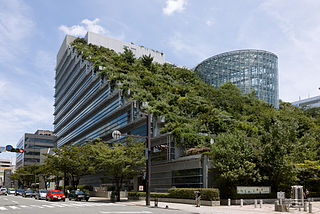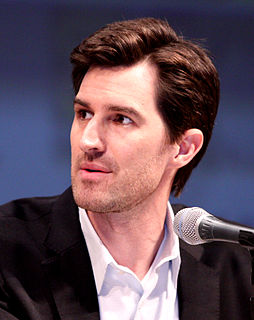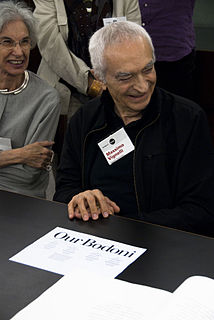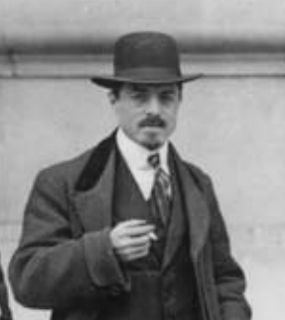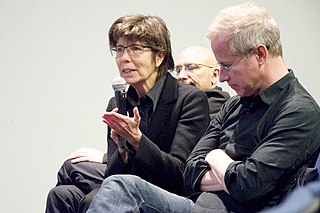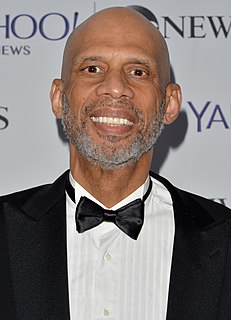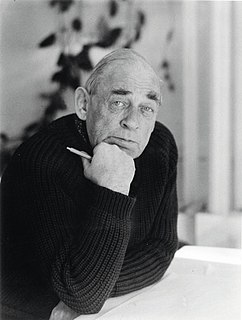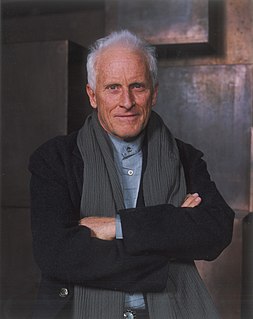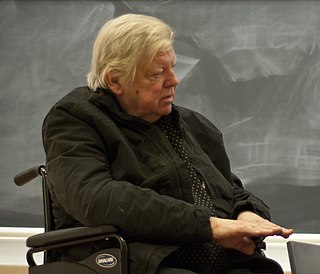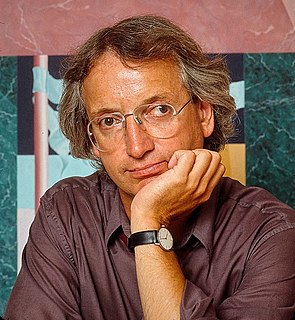Top 1200 Architecture School Quotes & Sayings
Explore popular Architecture School quotes.
Last updated on April 14, 2025.
All important architecture of the last century was strongly influenced by political systems. Look at the Soviet system, with its constructivism and Stalinism, Weimer with its Modern style, Mussolini and, of course, the Nazis and Albert Speer's colossal structures. Today's architecture is subservient to the market and its terms. The market has supplanted ideology. Architecture has turned into a spectacle. It has to package itself and no longer has significance as anything but a landmark.
I started to begin to be interested in architecture and design when I was 14 years old, which was pretty early in life. And then I would start to look at architectural magazines and I eventually went to the school of architecture too, but one of the things I learned very early is that an architect should be able to design anything from a spoon to the city.
When we talk of architecture, people usually think of something static; this is wrong. What we are thinking of is an architecture similar to the dynamic and musical architecture achieved by the Futurist musician Pratella. Architecture is found in the movement of colours, of smoke from a chimney and in metallic structures, when they are expressed in states of mind which are violent and chaotic.
When I was in architecture school, rather than giving us drafting boards and t-squares and lead pencils and stuff they gave us all the same tools that places like Digital Domain and ILM used to make features films or special effects. They gave us all these digital tools like Alias and Mya and Soft Image and all these kind of high-end computers, so I came out of architecture school knowing how to use all that stuff. And I started making short films at night.
My high school had been a renovated old hospital, so when I first came to the UCLA campus in the spring of 1965, I was immediately impressed by the classic northern Italian architecture that was mixed with futuristic ultra-modern buildings. The classic architecture gave it the heft of old wisdom while the modernistic look inspired hope for the future.
Sustainability has become a religion in architecture - not that there's anything wrong with it - but I think it has to work both ways. Everyone thinks architecture has to be subservient to sustainability, but what if we thought in the other direction, like, what can sustainability do to make architecture more exciting?
For me, architecture is an art the same as painting is an art or sculpture is an art. Yet, architecture moves a step beyond painting and sculpture because it is more than using materials. Architecture responds to functional outputs and environmental factors. Yet, fundamentally, it is important for me to stress the art in architecture to bring harmony.
I realized that the way I approached architecture was with a somewhat fashion brain. That didn't get me very good marks in school, because everyone thought fashion was lightweight. In architecture they say, "Well, why is the door pink? Where does it go? What does the pink mean? What does it symbolize? All the other doors are beige, why is that one pink?" I was like, "Well, it's pink because it's pretty."
When we come to understand architecture as the essential nature of all harmonious structure we will see that it is the architecture of music that inspired Bach and Beethoven, the architecture of painting that is inspiring Picasso as it inspired Velasquez, that it is the architecture of life itself that is the inspiration of the great poets and philosophers.
What each school offers is something unique. But, there are two types of activity an architect must be educated on. First, the architect needs concentrated activities to learn the guidelines, and that is what school is for. But, second, is the public aspect of education. The architect needs to see architecture in the streets to learn.
Architecture is art. I don't think you should say that too much, but it is art. I mean, architecture is many, many things. Architecture is science, is technology, is geography, is typography, is anthropology, is sociology, is art, is history. You know all this comes together. Architecture is a kind of bouillabaisse, an incredible bouillabaisse. And, by the way, architecture is also a very polluted art in the sense that it's polluted by life, and by the complexity of things.
Architecture produces a musical mood in our inner being, and we notice that even though the elements of architecture and music appear to be so alien in the outer world, through this musical mood engendered in us, our experience of architecture brings about a reconciliation, a balance between these two elements.



